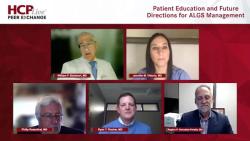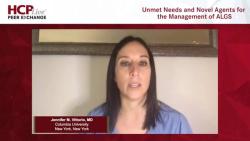Updates in the Management of Alagille Syndrome - Episode 7
Monitoring Nutrition and Progression of ALGS
Philip Rosenthal, MD, examines monitoring requirements and follow-ups for patients with Alagille syndrome.
William F. Balistreri, MD: Phil, we’ve heard about a lot of issues that these children may face. Can you give us a 10,000-foot overview of your initial approach? I’m talking about the nutritional issues, fat-soluble vitamin deficiency, monitoring progression, and so on.
Philip Rosenthal, MD: It’s very clear that if you’re cholestatic, you’re going to have problems with fat and fat-soluble vitamins. Patients with Alagille syndrome can have pathologic fractures as a result of low vitamin D levels. They can have poor growth. In fact, at CHOP [Children’s Hospital of Philadelphia], they developed separate growth curves for children with Alagille syndrome. As we’re all aware, vitamin E deficiency can cause neurological issues. Luckily, we don’t see much vitamin A deficiency, because it can cause night blindness. Vitamin A is probably the easiest to absorb of all the fat-soluble vitamins. They can have bleeding problems with vitamin K.
People use Pregestimil because medium-chain triglycerides can be absorbed without the need for bile acids to form micelles. Focusing on nutritional aspects of the disease as a hepatologist and a gastroenterologist is key to the management. That includes monitoring vitamin levels every few months, making adjustments in whatever supplements one necessarily needs to use, and keeping an eye on calorie counts, sometimes using 30-calorie-per-ounce feeds using G [gastronomy] tubes or NG [nasogastric] tubes to try to help these patients grow. Because as Jennifer [Vittorio] said, they’re developing their brain in the first few months of life, and we want to try to optimize everything we can for their development and growth.
William F. Balistreri, MD: Thank you, Phil. With transient elastography and other methods [available], do you have any quick thoughts about what you’d advise for monitoring for progression?
Philip Rosenthal, MD: Within the Children’s [Hospital] network, we’ve been looking at using fiber scans to look at stiffness of the liver. I don’t think there are enough good data to suggest that’s the key method that one should utilize to assess progression of the disease. It’s interesting that with Alagille syndrome, as opposed to other cholestatic liver diseases, most of the time patients don’t require a liver transplant because of end-stage liver disease. There clearly are patients with Alagille syndrome who progress to end-stage liver disease and need a liver transplant as a result, but your typical patient with Alagille syndrome isn’t going on to a liver transplant because of portal hypertension, ascites, and cirrhosis. It’s more because of their quality of life and severe cholestasis resulting in pruritus, which can be debilitating. That’s one of the key differentiators of Alagille syndrome as opposed to some of the other cholestatic liver disorders that we encounter.
William F. Balistreri, MD: Thank you, Phil. We’ll get into that in just a moment. I want to thank the panelists for giving us a very good picture of what Alagille syndrome is like and the challenges still out there in terms of the global diagnosis of cholestatic liver disease and, as Jennifer pointed out, the problems that these families will need to cope with.
TRANSCRIPT EDITED FOR CLARITY



